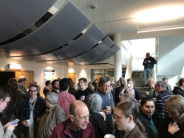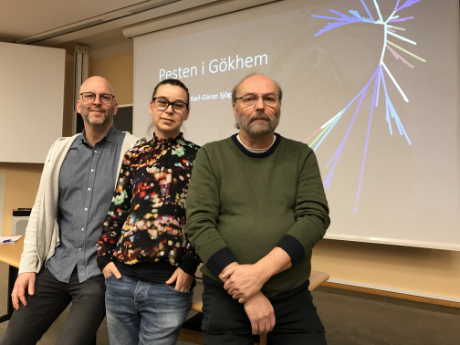
Three lecturers from the Department of Historical Studies were represented. Professor Peter Fischer gave a presentation on "The Swedish Cyprus Expedition". Doctoral student Malou Blank lectured on a West Swedish megalithic grave from the older Bronze Age. In addition, Karl-Göran Sjögren presented recent research on DNA findings that led to new knowledge about the origin and spread of the plague. These findings received a lot of attention in Swedish press during December 2018.
Interdisciplinary research
- The Archaeology Day is a great way to get an overview, says Tony Axelsson, archaeologist at the Department of Historical Studies and organizer of the Archeology Day 2019.
- The archeology day is an excellent way to meet across the institutional boundaries. There are many different archaeological companies today and very exciting research and assignments have been carried out, says Tony Axelsson.

The archaeological day was characterized by research results that arose due to interdisciplinary collaborations. In addition to collaborations that have led to new findings about the origin of the plague, techniques from geophysics can now also change the everyday life of archaeologists.
- Many of the participants were fascinated by how it is now possible to search through extensive areas within a relatively short time, says Tony Axelsson.
Do you want to learn more about our researchers’ findings?
Karl-Göran Sjögren: ”Världens äldsta spår av pest funna i Falköping” (in Swedish)
Malou Blank: ”De första svenskarna” (SVTplay, in spoken Swedish)
Peter Fischer: ”Bronsåldersstadens kollaps” (Sveriges Radio, in spoken Swedish)
Photo: From the left Tony Axelsson, Malou Blank, Karl-Göran Sjögren.

